The Real Deal on Flat Piercings: A Pro’s Guide to Pain, Price, and Healing
I’ve been in the piercing world for a long time, long enough to see trends flash and fade. But some piercings just have this quiet, cool confidence that never goes out of style. The flat piercing is definitely one of them.
In this article
- First Things First: Is Your Ear Right for a Flat?
- The Big Question: How Much Does a Flat Piercing Hurt?
- Let’s Talk Money: Budgeting for Your New Piercing
- The Piercing Process: A Quick and Clean Breakdown
- Your First Jewelry (And Why It Matters So Much)
- Healing 101: The Long Haul and How to Survive It
- Uh Oh… Troubleshooting Common Bumps in the Road
- Galerie d’inspiration
It’s not as in-your-face as an industrial bar or as universal as a simple lobe piercing. Its magic is all in the placement. It sits on that wide, smooth area of cartilage in your upper ear—a spot that’s basically a perfect little canvas. You can go for a single, minimalist stud or get creative with a whole cluster of gems, something people often call a constellation. It’s incredibly versatile.
But getting it right is more than just poking a hole. It’s a mix of art and science. It requires a solid understanding of ear anatomy, how the body heals, and what materials are safe. When someone comes in for a flat, my first step is always to study their ear not as a body part, but as a unique landscape. The specific curves and folds of your cartilage determine everything. Nail the placement, and you’ve got a gorgeous piercing that heals beautifully. Get it wrong, and you’re signing someone up for months of headaches. This guide is all about getting it right from the start.
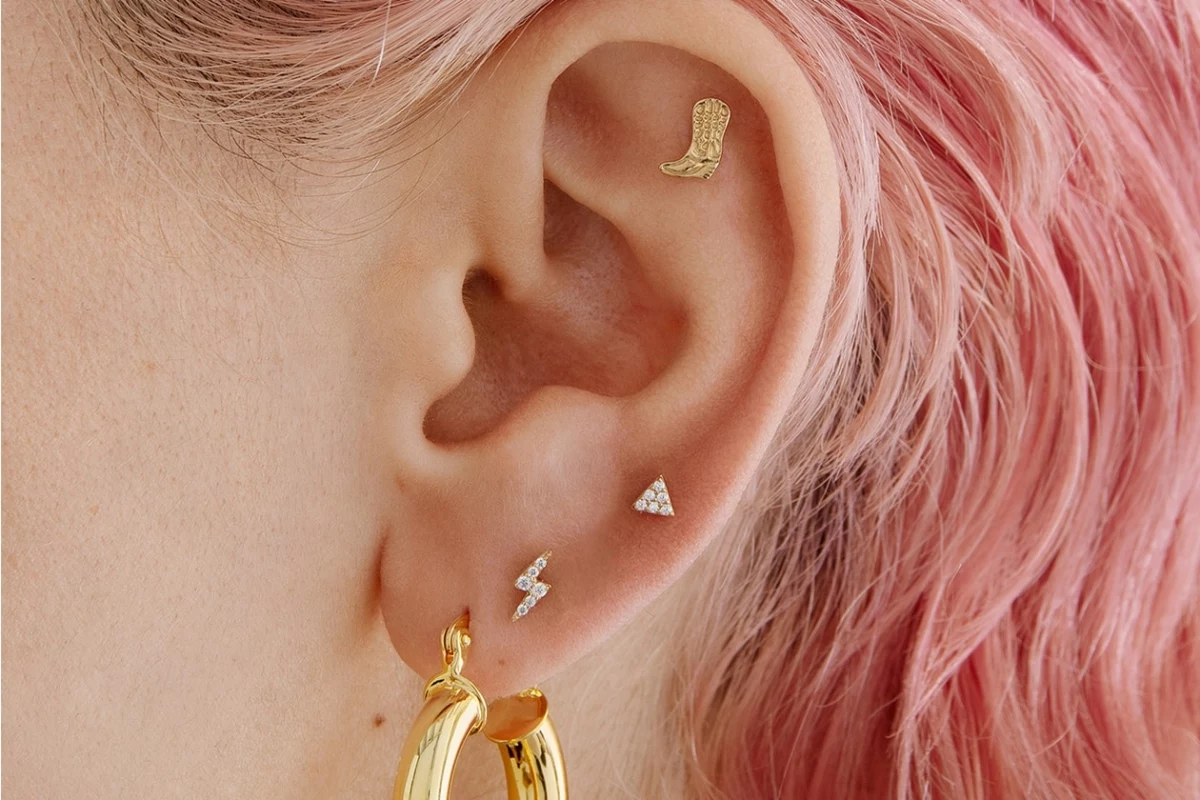
First Things First: Is Your Ear Right for a Flat?
Before we even think about jewelry or aftercare, we have to talk about your ear. Seriously. The success of a flat piercing is pretty much decided before a needle ever leaves its sterile pouch. It all comes down to anatomy.
The target zone is that flat plane of cartilage between the outer rim of your ear (the helix) and the next fold of cartilage. It looks simple, but it’s different on everyone. Some people have a broad, genuinely flat area that’s perfect for a whole collection of piercings. Others have a much narrower or more curved space. The first thing I do in a consultation is gently feel the cartilage to check its thickness and how it’s shaped.
Here’s what a good piercer is looking for:
- The Actual ‘Flatness’: Is the area truly flat, or does it have a subtle curve? Trying to put a flat-backed piece of jewelry on a curved surface creates pressure points. Those spots get angry, heal poorly, and can even make the piercing look crooked.
- Location, Location, Location: We need to find the sweet spot. Too close to the outer rim, and it might get bumped constantly or interfere with other helix jewelry you might want later. Too far inward, and it could press against other cartilage folds, causing irritation.
- Lifestyle Check: This is a big one. Do you wear glasses? Use over-ear headphones? The arms of glasses can rest directly on the area we want to pierce. If we place the piercing right there, the constant pressure will make healing a nightmare. I always have clients put their glasses on after we mark the spot to make sure there’s plenty of clearance.
This is exactly why you go to a professional. A piercer using a piercing gun doesn’t think about any of this—they just point and shoot. A pro uses their knowledge of anatomy to make sure your piercing will be happy for years to come.
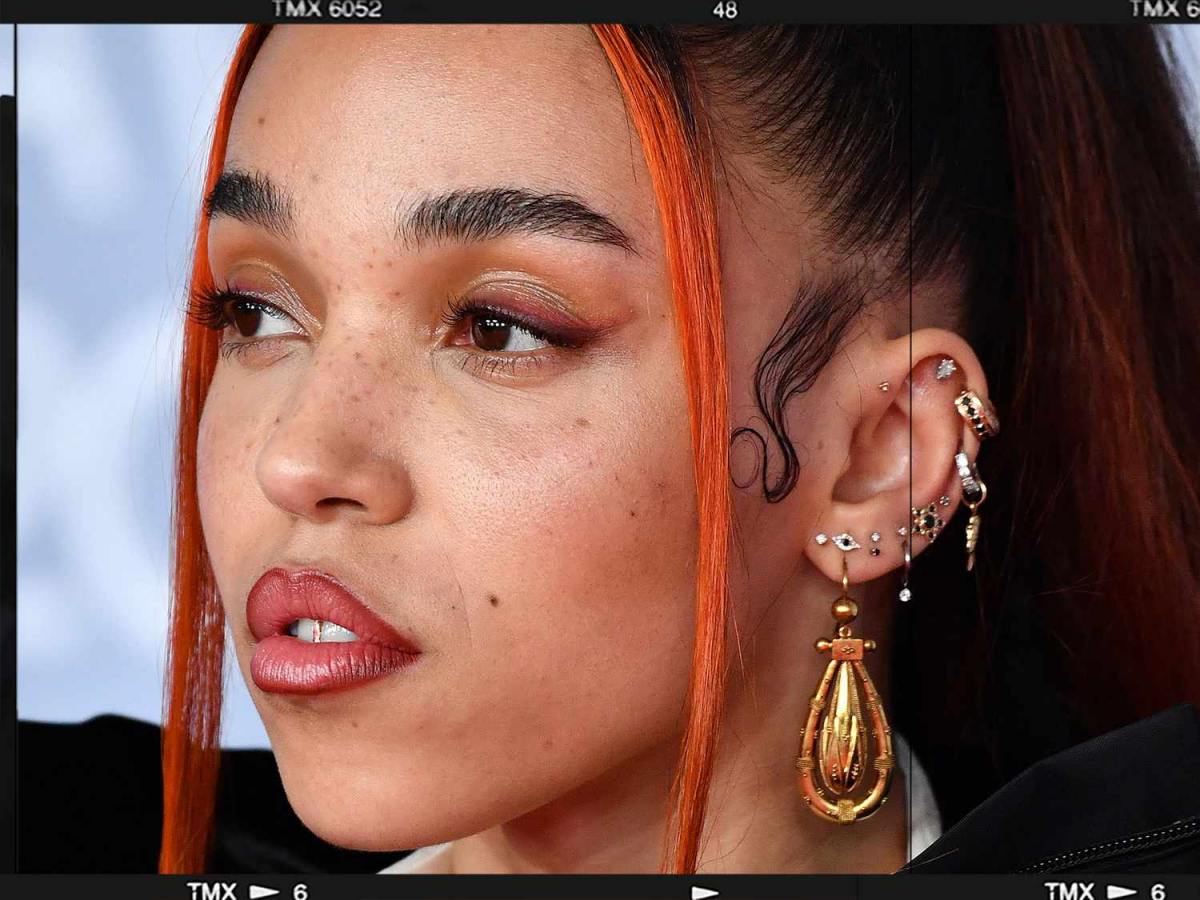
The Big Question: How Much Does a Flat Piercing Hurt?
Alright, let’s just get it out of the way. This is usually the first thing people ask, and for good reason! Honestly, it’s not as bad as you might think, but it’s definitely more intense than an earlobe.
On a pain scale of 1 to 10, if a soft lobe piercing is a 2, most of my clients would put the flat at a solid 5 or 6. You’ll feel a quick, sharp pressure for a second or two, and some people hear a little “pop” as the needle passes through the cartilage. That’s totally normal. But the intense part is over in a flash. The key is to breathe. A good piercer will guide you to take a deep breath in and then pierce on the long, slow exhale. It really helps.
Let’s Talk Money: Budgeting for Your New Piercing
A quality piercing is an investment in your body, so it’s good to know the costs upfront. It’s not just a one-and-done price. Heads up, you’re typically paying for two things separately: the service and the jewelry.
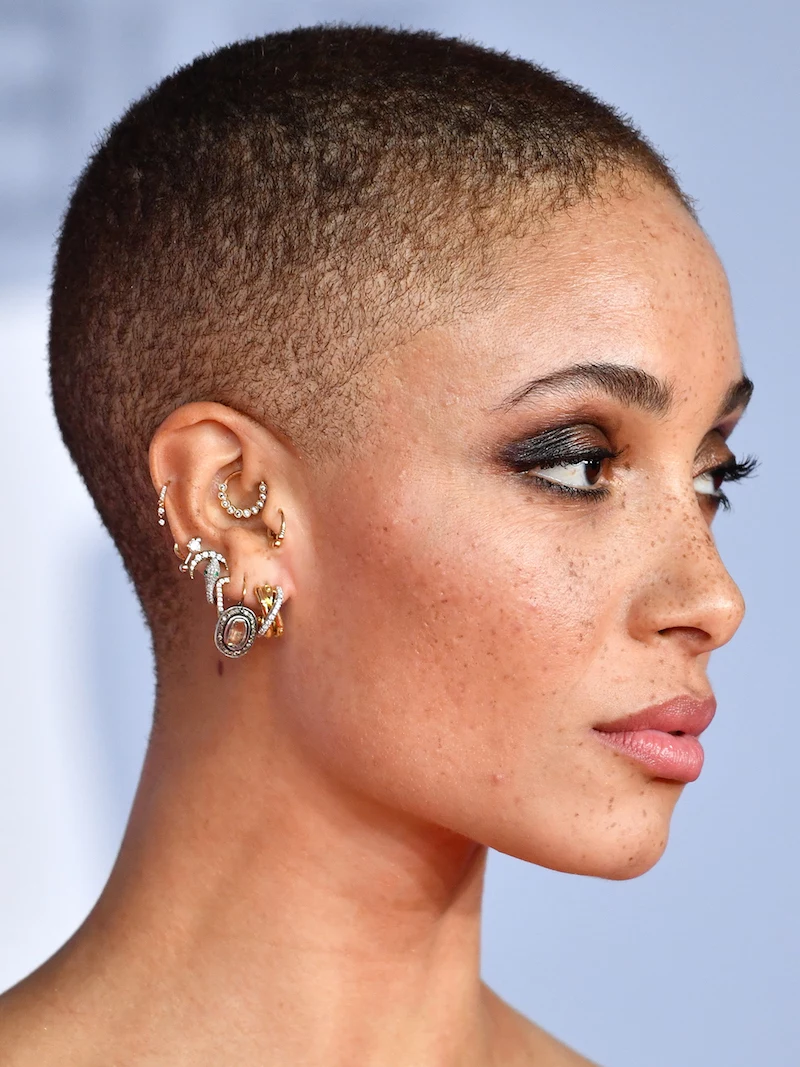
- The Piercing Fee: This covers the piercer’s time, expertise, and all the sterile, single-use equipment. For a single flat piercing, expect this to be somewhere between $40 and $70, depending on the studio’s location and reputation.
- The Initial Jewelry: This is where the price can really vary. A basic, implant-grade titanium labret stud might start around $35. If you want to go for solid 14k or 18k gold with a genuine gemstone, that price can easily jump to $100 or much more.
Oh yeah, and don’t forget about the downsize! After the initial swelling goes down in a month or two, you’ll need to buy a shorter post for your jewelry. That post is a separate purchase, usually another $15 to $25. Plan for it!
The Piercing Process: A Quick and Clean Breakdown
Once we’ve found the perfect spot, the procedure itself is very quick. Every single step is designed for safety and to cause as little trauma to the tissue as possible.
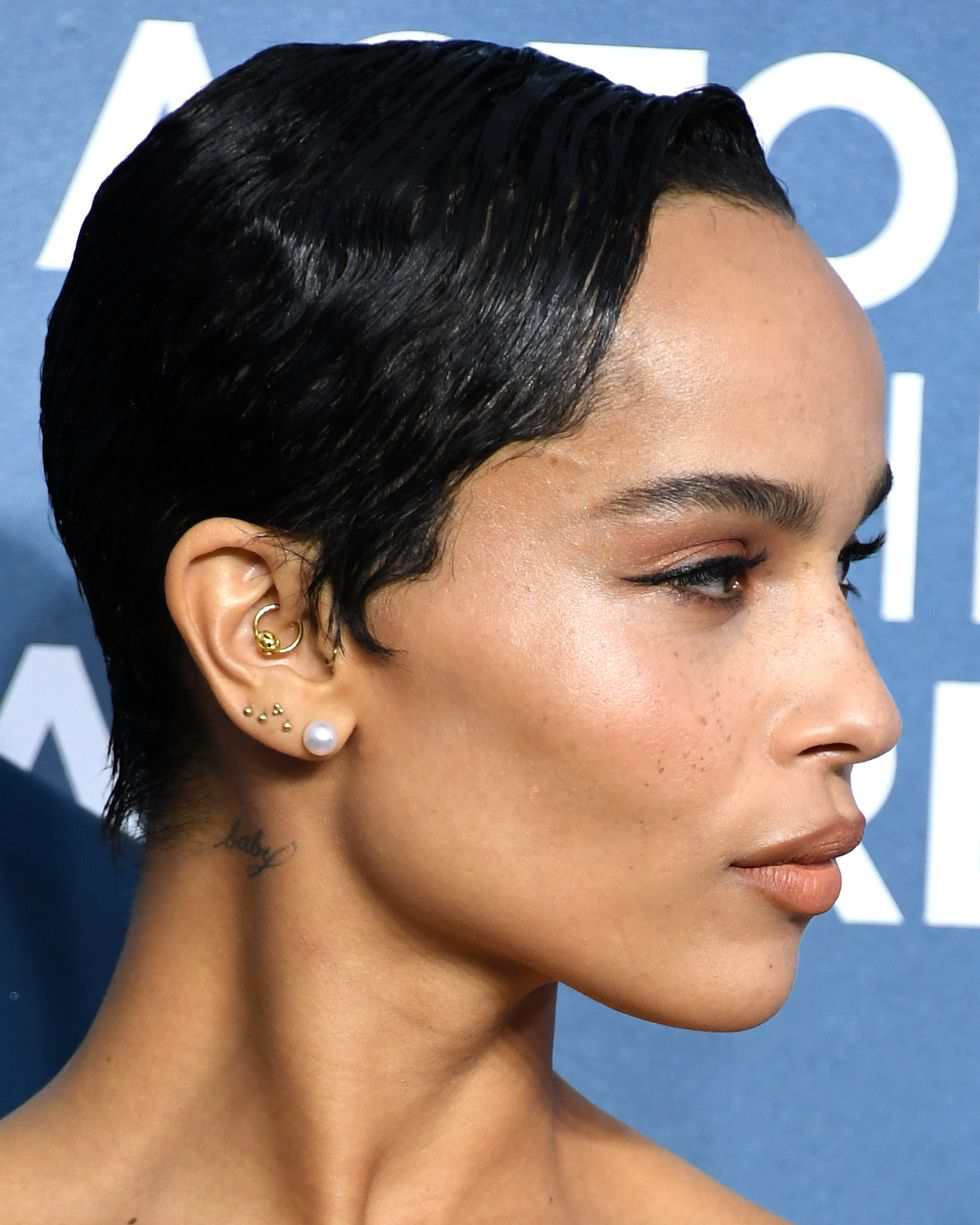
You’ll lie down on a piercing table, which helps you stay still and prevents any light-headedness. After disinfecting the area, I’ll ask you to take that deep breath. On the exhale, the piercing happens. I use a brand-new, sterile, hollow needle—usually a 16g (1.2mm) or 18g (1.0mm) thickness. It passes through smoothly and creates a clean channel.
We NEVER use piercing guns for cartilage. A gun uses blunt force to ram a dull stud through your ear, which shatters the cartilage and can lead to a world of problems like scarring and infection. A hollow needle is far superior because it cleanly removes a tiny piece of tissue, making a perfect path for the jewelry.
Immediately after the needle is through, the jewelry is inserted, usually by following the needle right out. The whole thing takes just a couple of seconds. We’ll clean you up, and you’re done. A tiny bit of bleeding is normal.
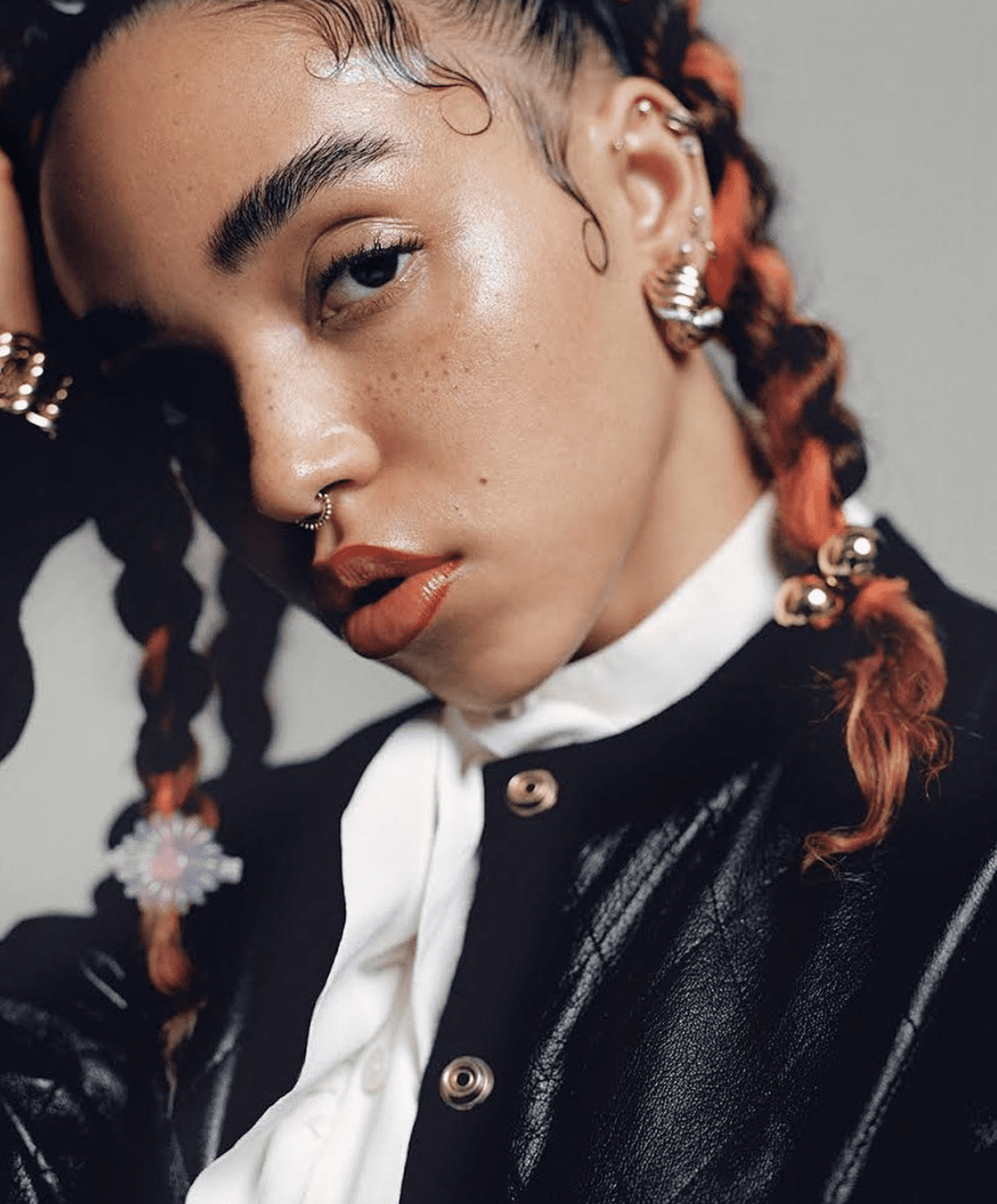
Your First Jewelry (And Why It Matters So Much)
The jewelry you get pierced with isn’t just for looks—it’s a medical implant that your body needs to heal around. The material and style are chosen specifically to make healing easier.
For a fresh piercing, we only use materials that are proven to be biocompatible. Your best options are:
- Implant-Grade Titanium (ASTM F-136): This is the gold standard, and for good reason. It’s what’s used for surgical implants like bone screws. It’s nickel-free, lightweight, and won’t corrode. Plus, it can be anodized to create different colors.
- 14k or 18k Solid Gold: Gold is another fantastic, safe option, but it has to be solid, not plated. Plated jewelry has a thin coating of gold over a cheap base metal that’s often full of nickel. That plating wears away, exposing your healing piercing to nasty irritants. Always go for solid gold from a reputable body jewelry maker.
- Niobium: A bit less common, but this is another elemental metal that’s highly biocompatible and great for people with severe metal sensitivities.
As for style, we almost always start a flat piercing with a flat-back labret stud. It has a flat disc on the back, a post, and a decorative top. This is non-negotiable for a few reasons: it’s stable, it’s less likely to snag on hair and clothes, and we use an extra-long post to accommodate for initial swelling.
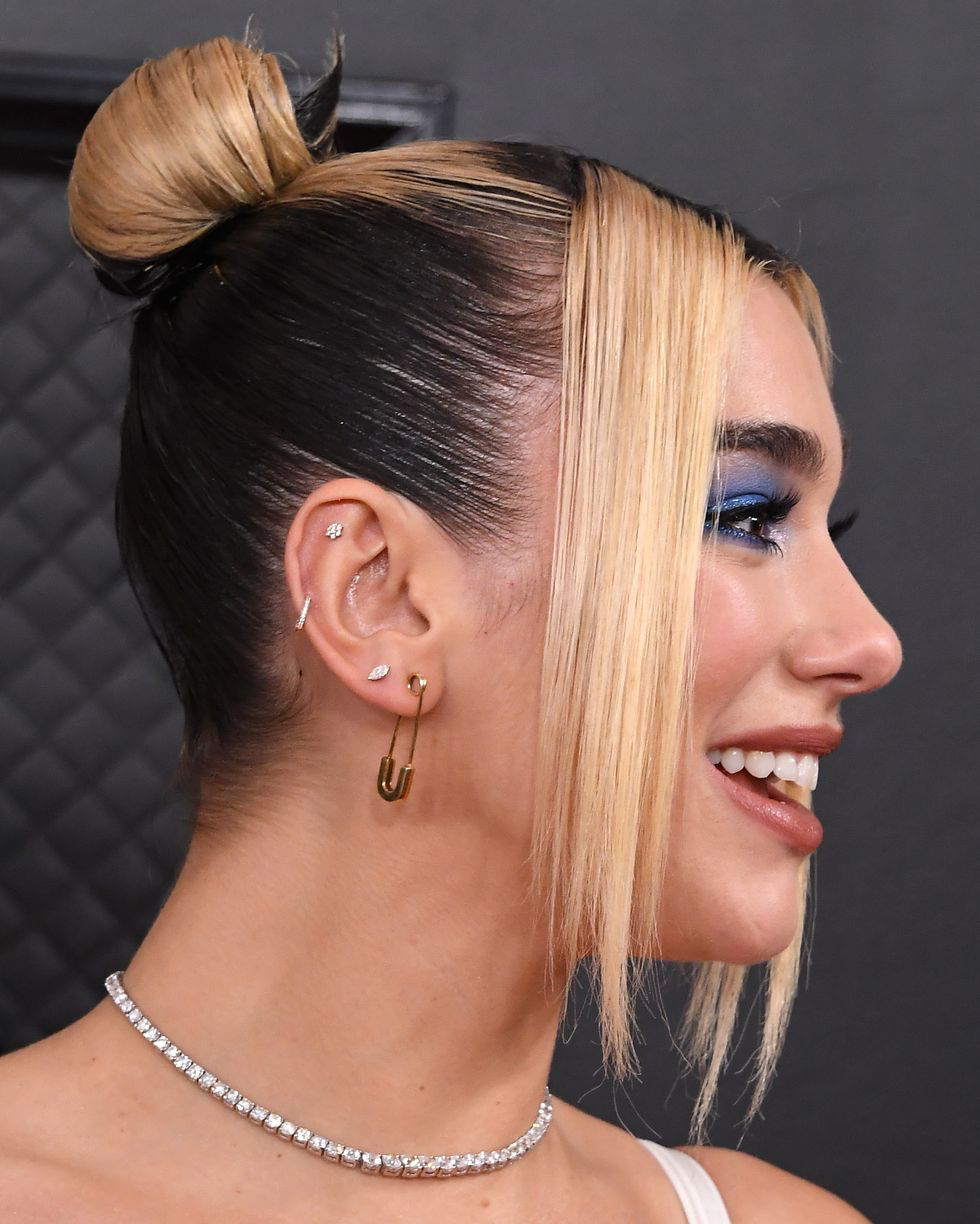
You simply can’t be pierced with a hoop here. The movement and curvature of a ring will constantly pull on the healing piercing, leading to nasty irritation bumps and a piercing that never heals correctly.
Healing 101: The Long Haul and How to Survive It
Okay, let’s be real. A flat piercing is a commitment. While it might look and feel pretty good after a few months, it isn’t considered fully, robustly healed for 9 to 12 months, and sometimes even longer. This is a marathon, not a sprint.
The Critical Downsize
About 4 to 8 weeks after your piercing, that initial swelling will have calmed down. The long bar we started with is now a liability—it’ll snag more easily and move around, causing irritation. You MUST go back to your piercer to have a shorter post put in. This is probably the most important step for long-term healing success.
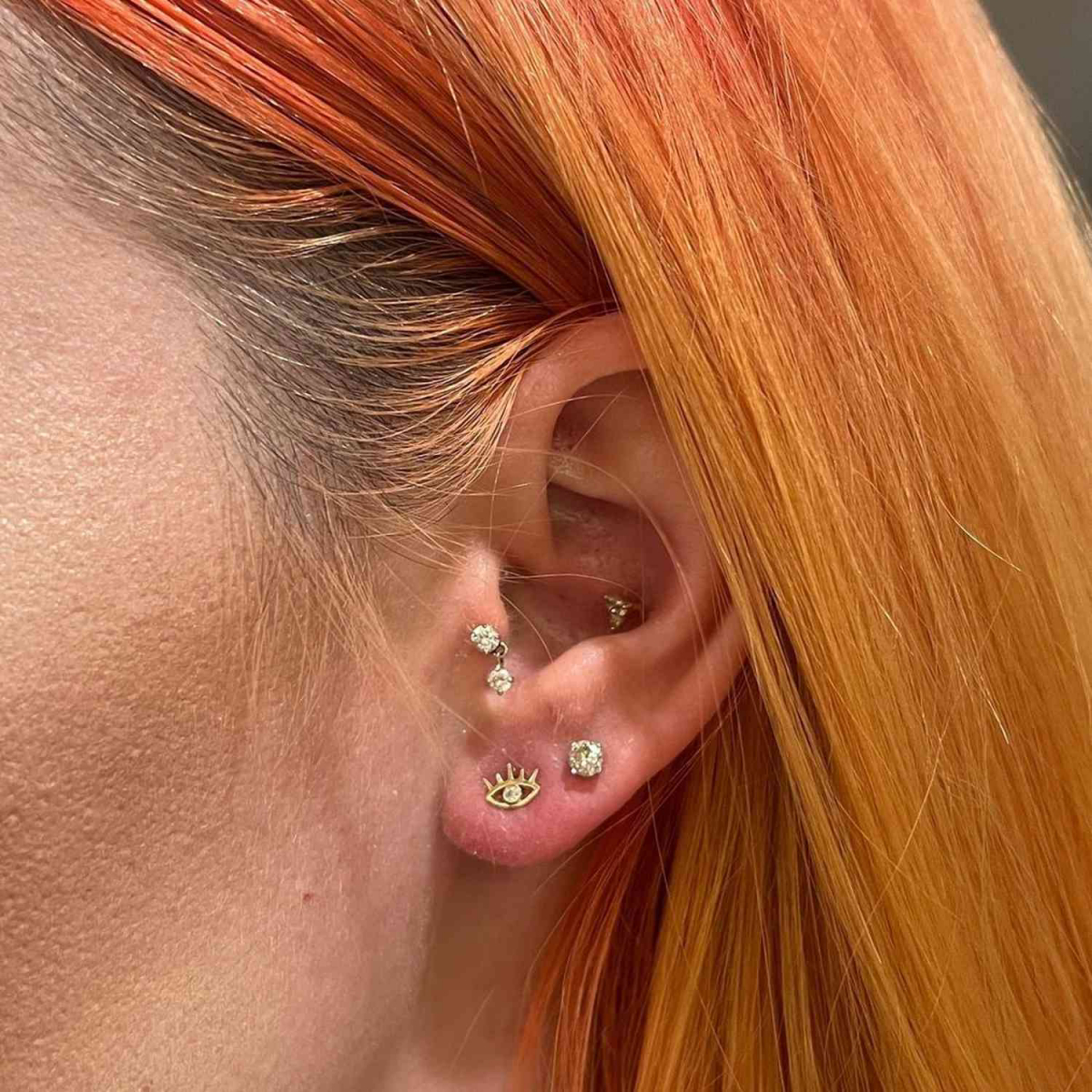
Your Daily Aftercare Routine
Less is more. The best way to care for your piercing is to leave it the hell alone (we call it the LITHA method). Your body knows what to do. Your only job is to keep it clean.
- Get a sterile saline spray. You can find products like NeilMed Piercing Aftercare at most pharmacies or online. Don’t use anything else—no soap, no alcohol, no DIY salt soaks.
- Gently spray the front and back of the piercing with the saline solution, 2 times a day.
- Pat it dry with a clean, non-woven gauze pad or let it air dry. Don’t use towels, which can snag the jewelry and harbor bacteria.
- That’s it. Don’t twist it, don’t touch it, don’t mess with it.
The Secret Weapon for Sleepers
This is a game-changer. Sleeping on a fresh cartilage piercing is a huge no-no. The pressure can cause it to shift, get irritated, and swell. The solution? Get a travel pillow (the U-shaped kind) and sleep with your ear in the hole. It keeps all the pressure off the piercing while you sleep. Trust me on this one.
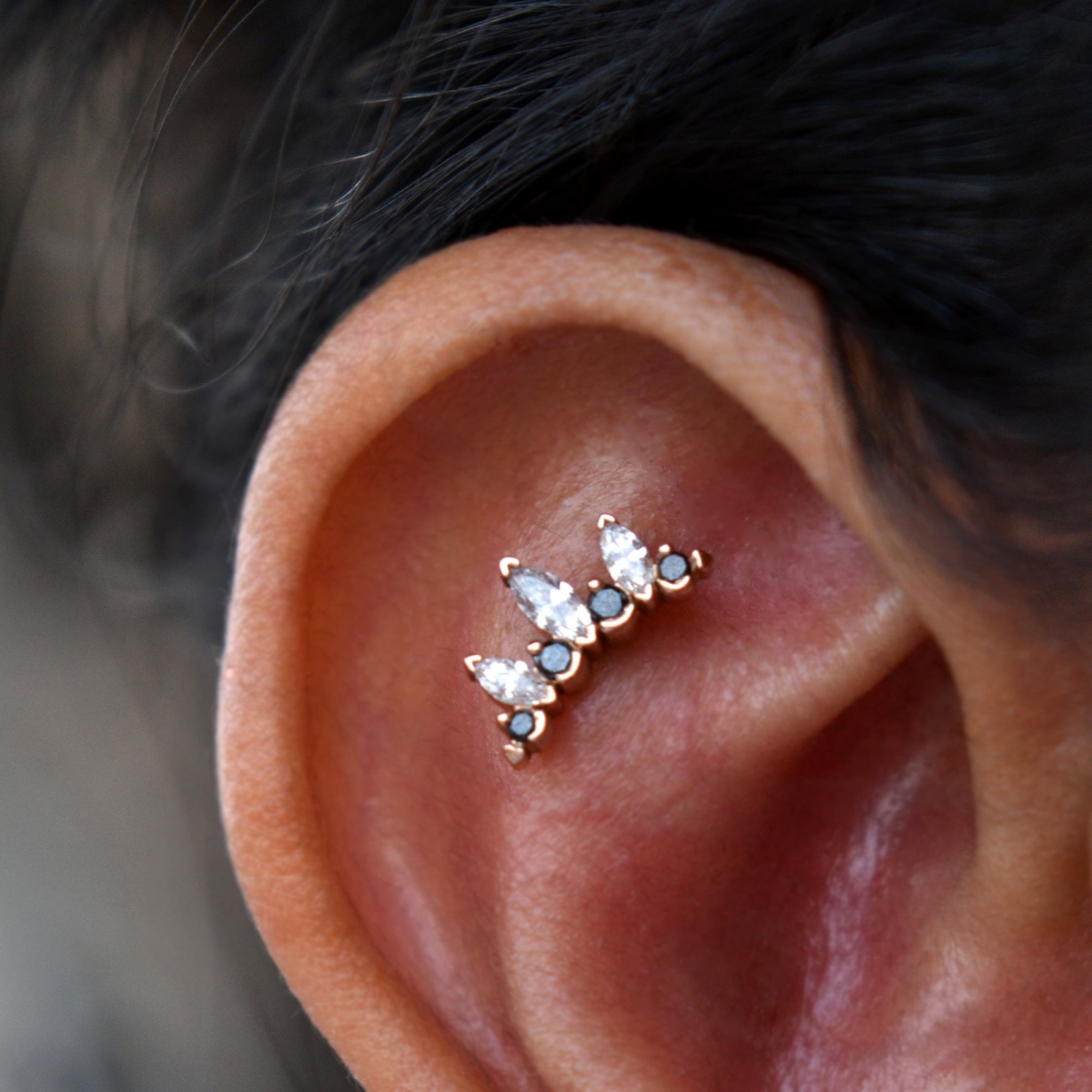
Uh Oh… Troubleshooting Common Bumps in the Road
Even with perfect aftercare, you might hit a snag. Don’t panic.
The most common issue is the dreaded “irritation bump.” It’s a small reddish bump that forms right next to the piercing. People often mistake them for keloids, but they are very different. Keloids are a rare genetic condition, whereas irritation bumps are just your piercing’s way of saying it’s been annoyed—by being slept on, snagged, or from moisture. The solution is to figure out the source of irritation (usually pressure or movement) and eliminate it. Go see your piercer; they can help you troubleshoot.
If you snag your piercing hard, it’s going to be sore and angry for a few days. Just treat it like it’s new again: clean it gently with saline and be extra careful not to touch it.
Ultimately, a happy flat piercing comes down to two things: a great piercer and a patient client. Find a pro you trust—a good place to start is the locator tool on the website for the Association of Professional Piercers—and be prepared to care for it properly for the long haul. The stunning result is well worth the effort.
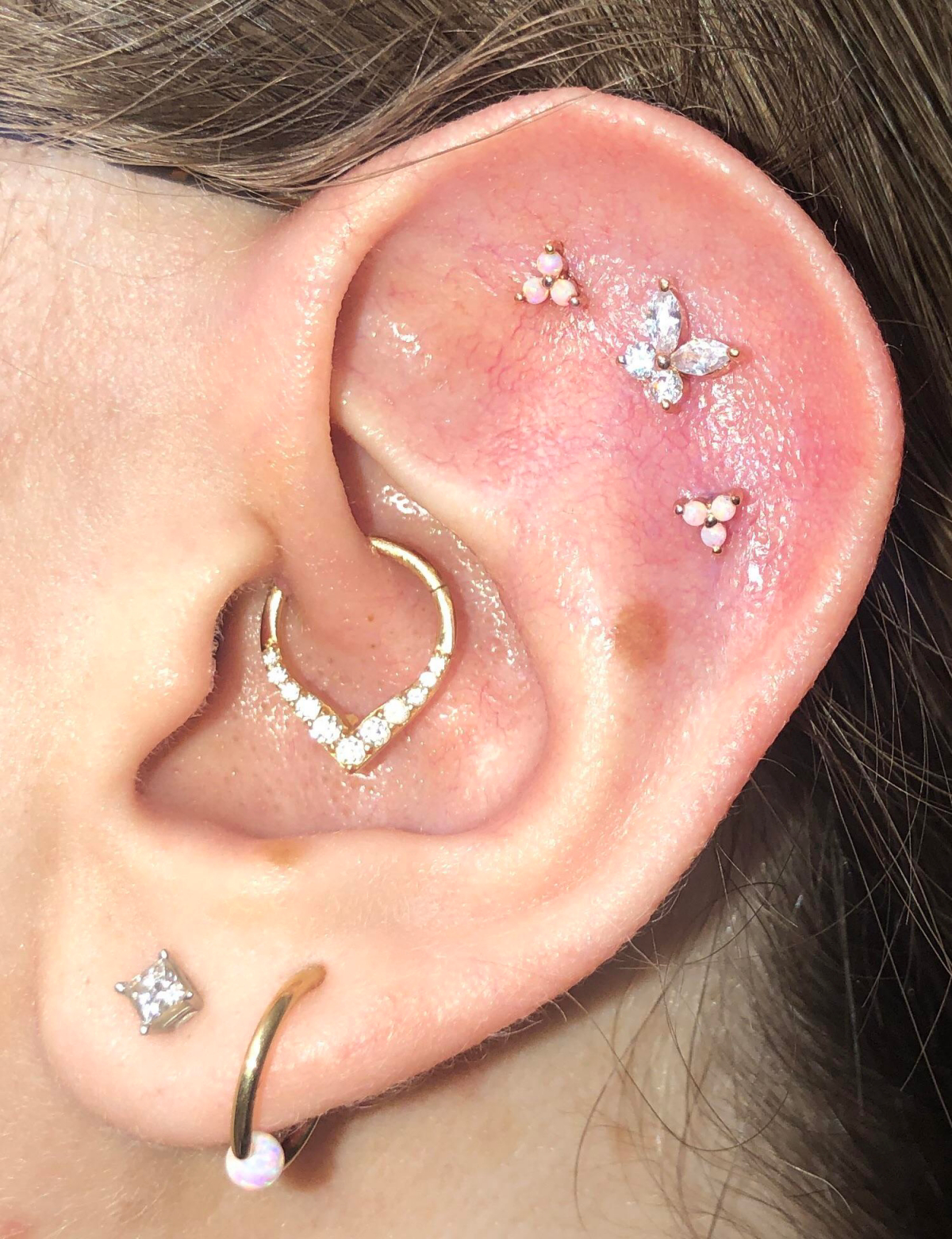
Galerie d’inspiration
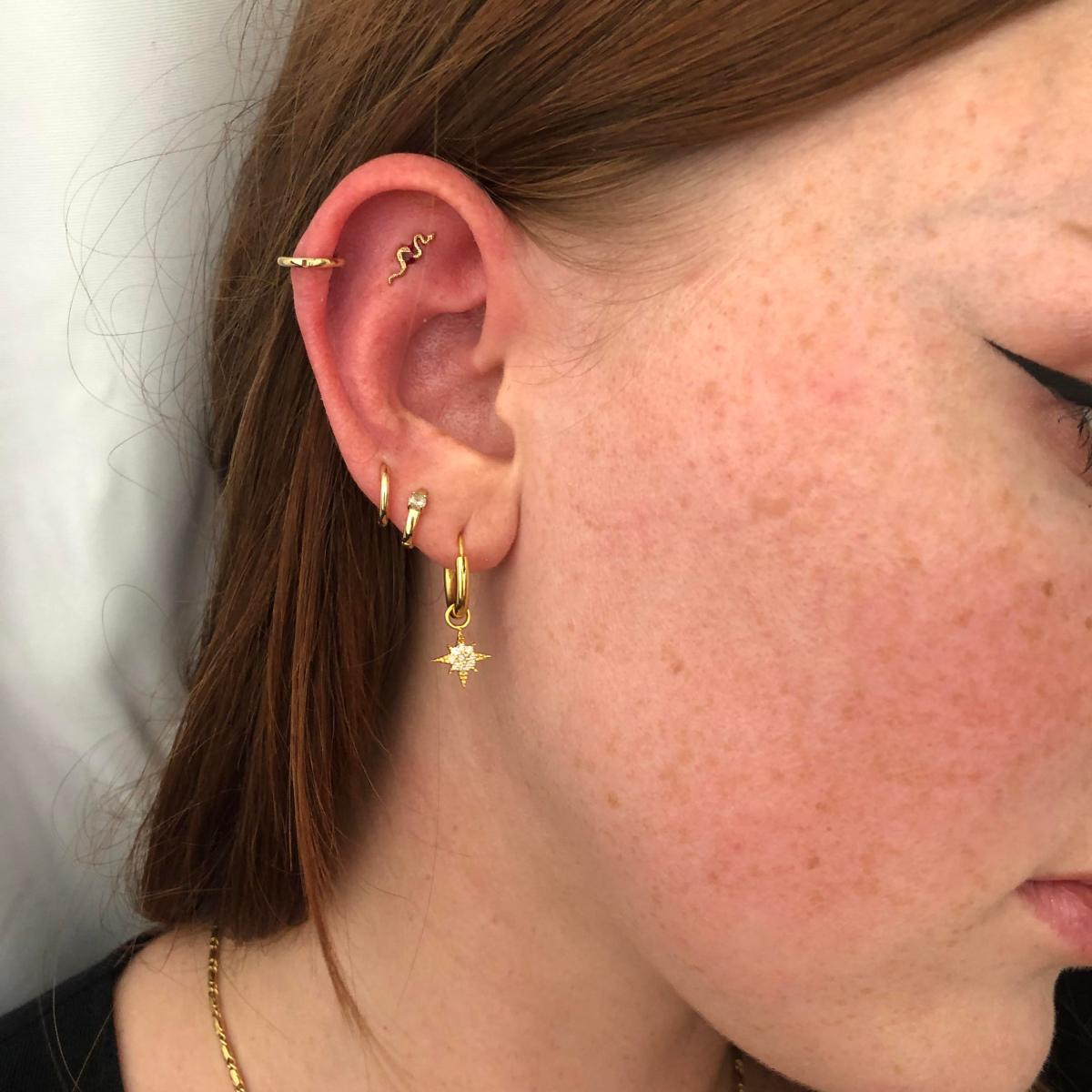
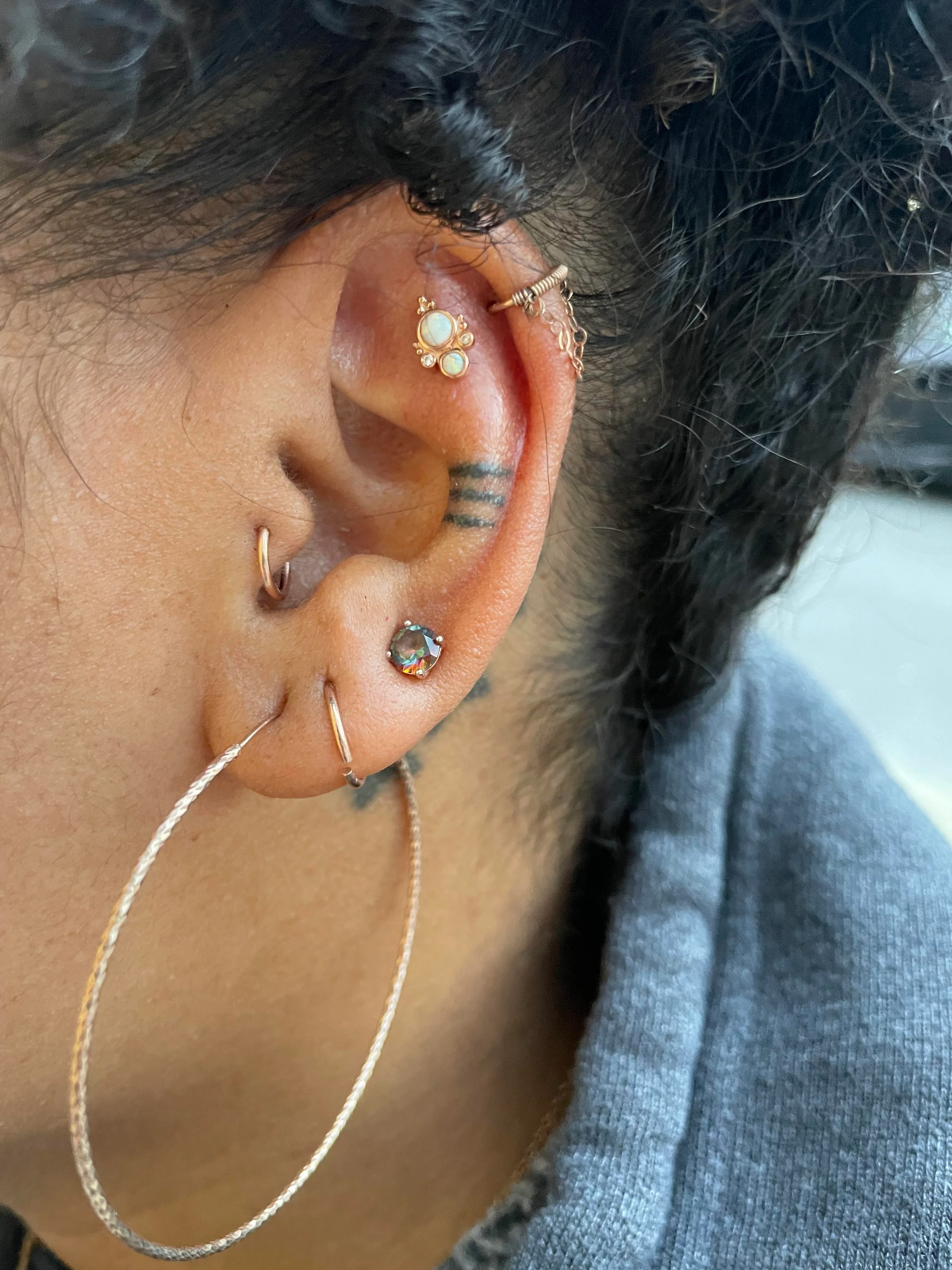
Implant-Grade Titanium: This is the gold standard for initial piercings. It’s lightweight, nickel-free, and meets the ASTM F-136 standard, meaning it’s certified for medical implants. It promotes faster, cleaner healing with minimal irritation.
‘Surgical’ Steel: This term is often a red flag. It’s a vague classification with no regulated quality standard, and it can contain enough nickel to cause reactions in sensitive individuals, slowing down healing. For a happy flat piercing, always insist on verified implant-grade titanium or solid 14k+ nickel-free gold.
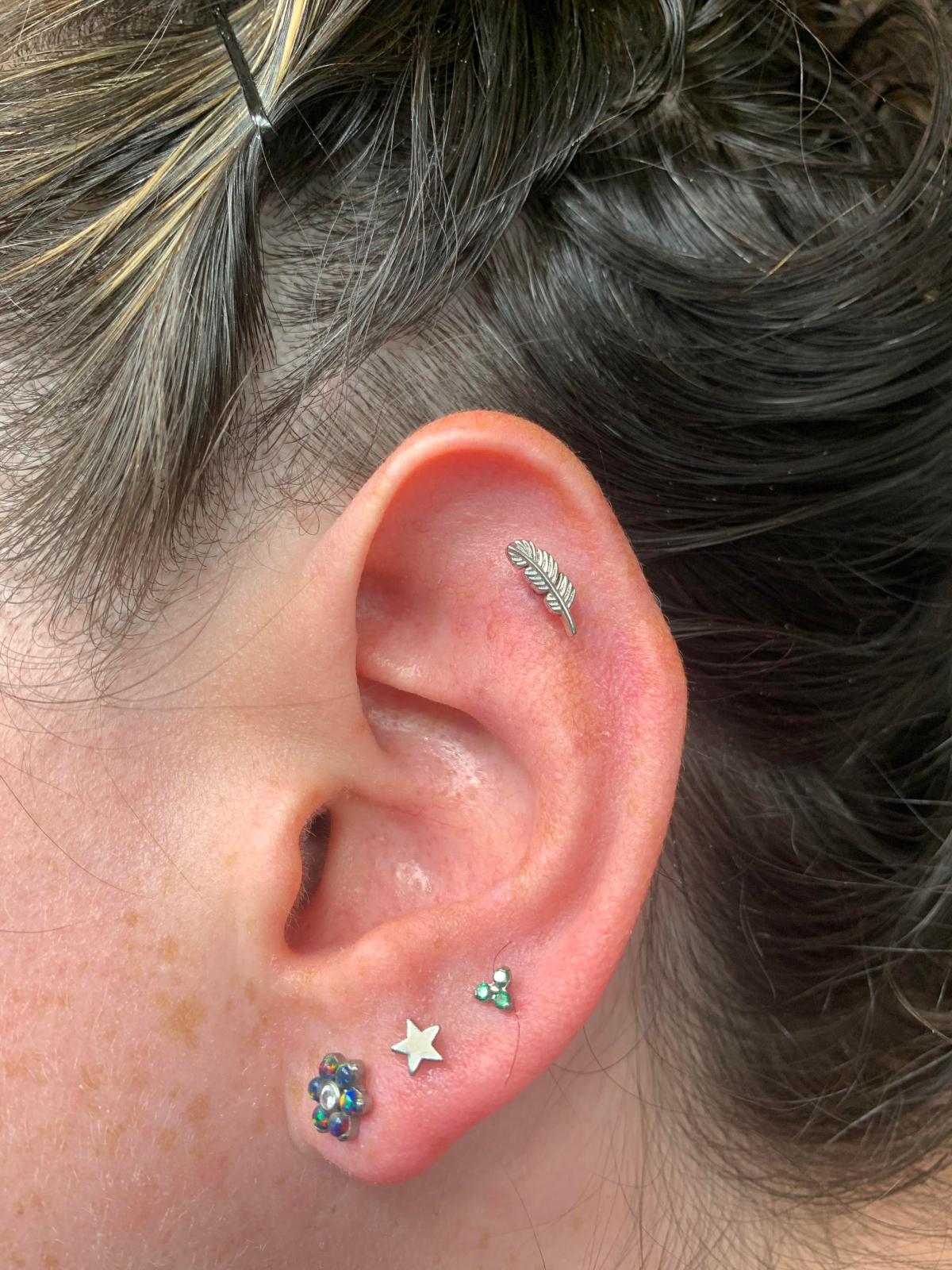
The ‘Constellation’ trend, where multiple small studs create a celestial pattern on the ear, has seen a 200% surge in interest on social media platforms over the past two years.
Your flat piercing is the perfect anchor for this look. Think of it as the ‘North Star’ of your ear curation. You don’t have to get all the piercings at once. Start with the flat, and once it’s healed, you can consult with your piercer to add smaller ‘satellite’ piercings around it, creating a unique map on your cartilage that’s entirely personal.
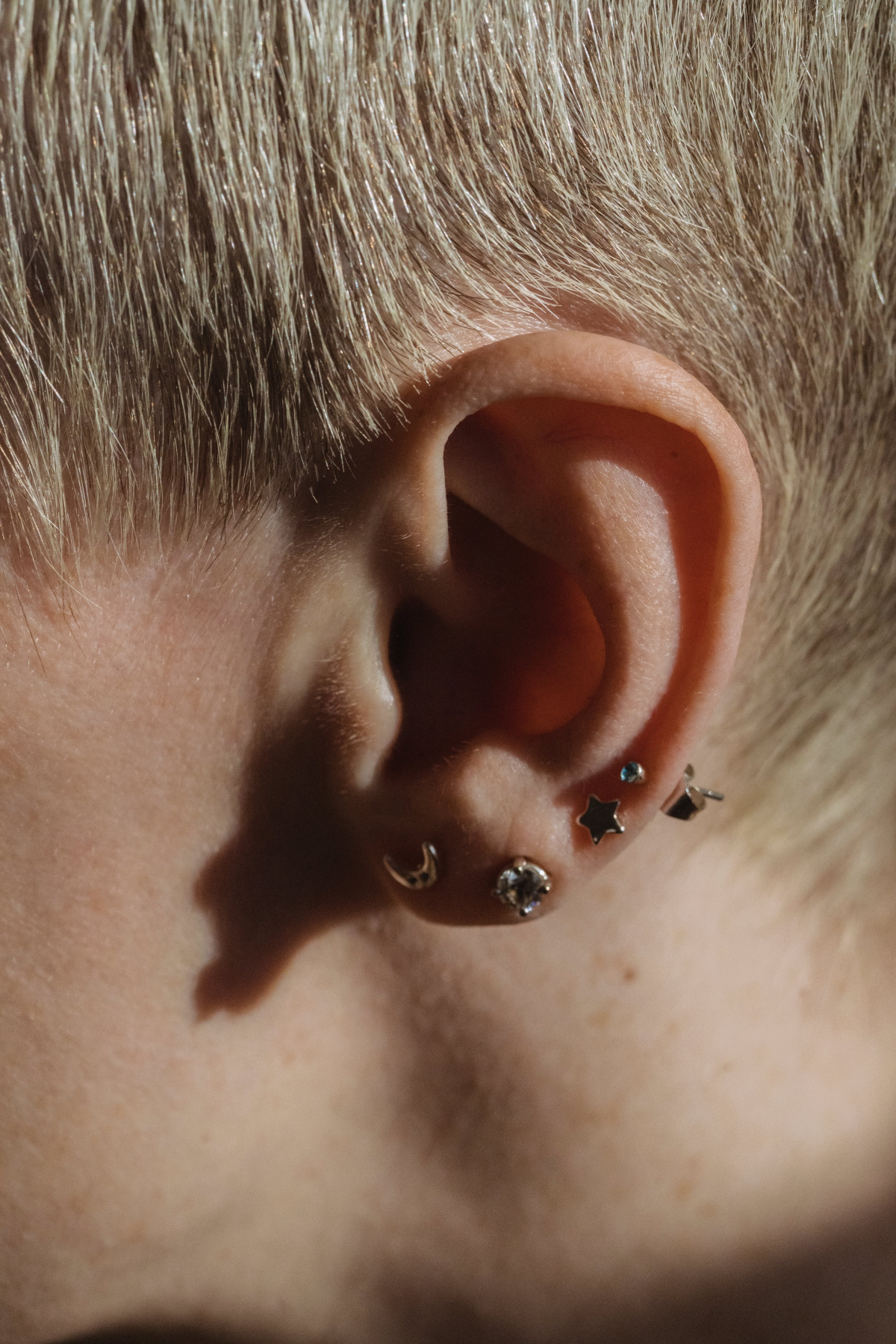
The biggest challenge after the needle? Learning to sleep again.
Pressure is the enemy of a healing cartilage piercing. Sleeping on your new flat can cause swelling, pain, and even shift the piercing angle permanently. The solution is simple and effective: a travel pillow. By sleeping with your ear in the hole of the U-shaped pillow, you can rest comfortably on your side without putting any pressure on the jewelry. It’s a small investment for a much smoother healing journey.
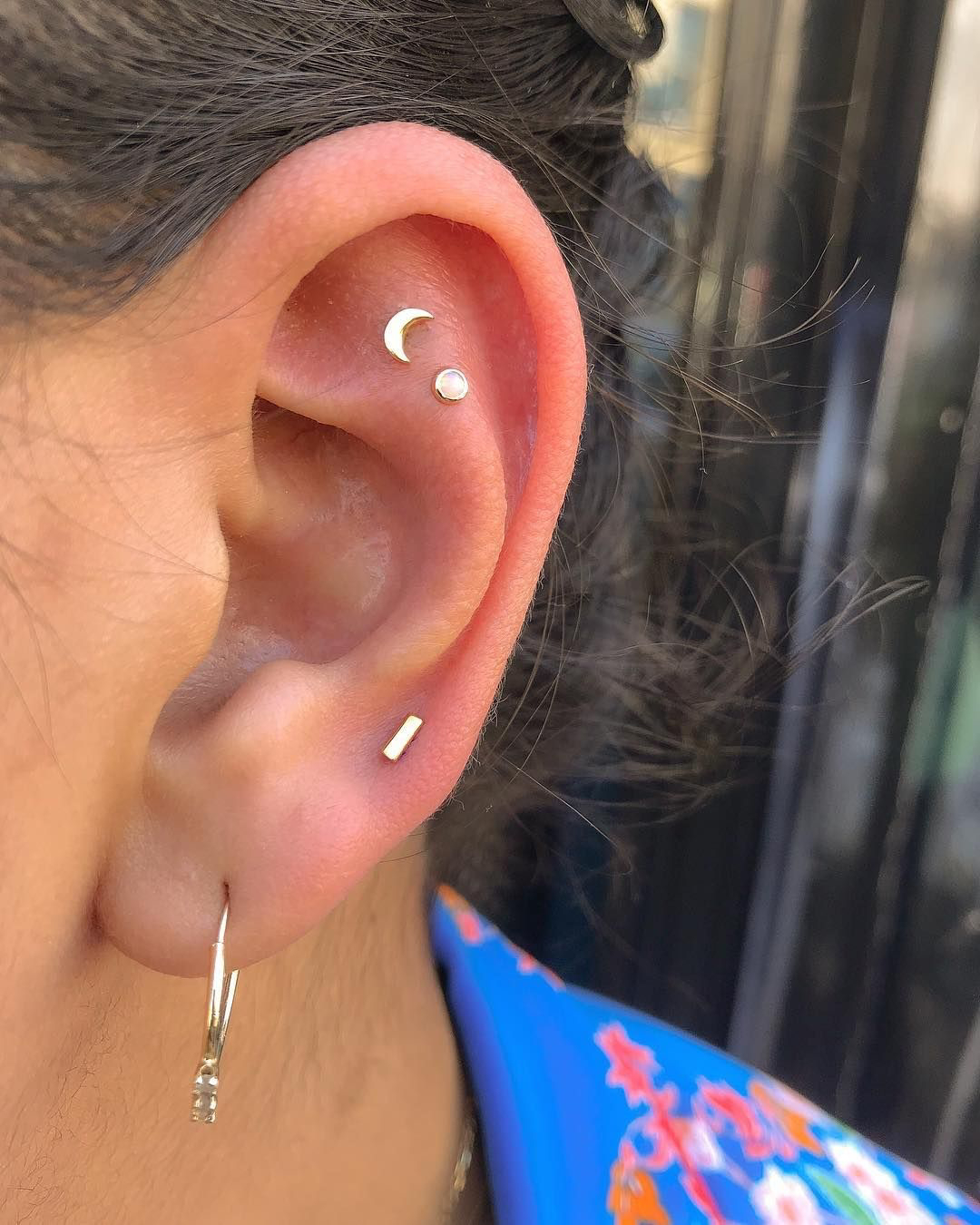
- A brilliant sparkle that catches the light just so.
- A piece that perfectly complements your other jewelry.
- An adornment that feels intentional and curated.
The secret? Choosing the right top. While you’ll heal with a simple flat-back labret, the decorative top is where personality shines. High-quality brands like BVLA (Body Vision Los Angeles), Anatometal, or Junipurr offer thousands of threadless ends in solid gold, from minimalist discs to intricate designs with genuine gemstones. Knowing your ‘dream top’ helps your piercer with placement, ensuring it sits perfectly on your ear’s unique landscape.
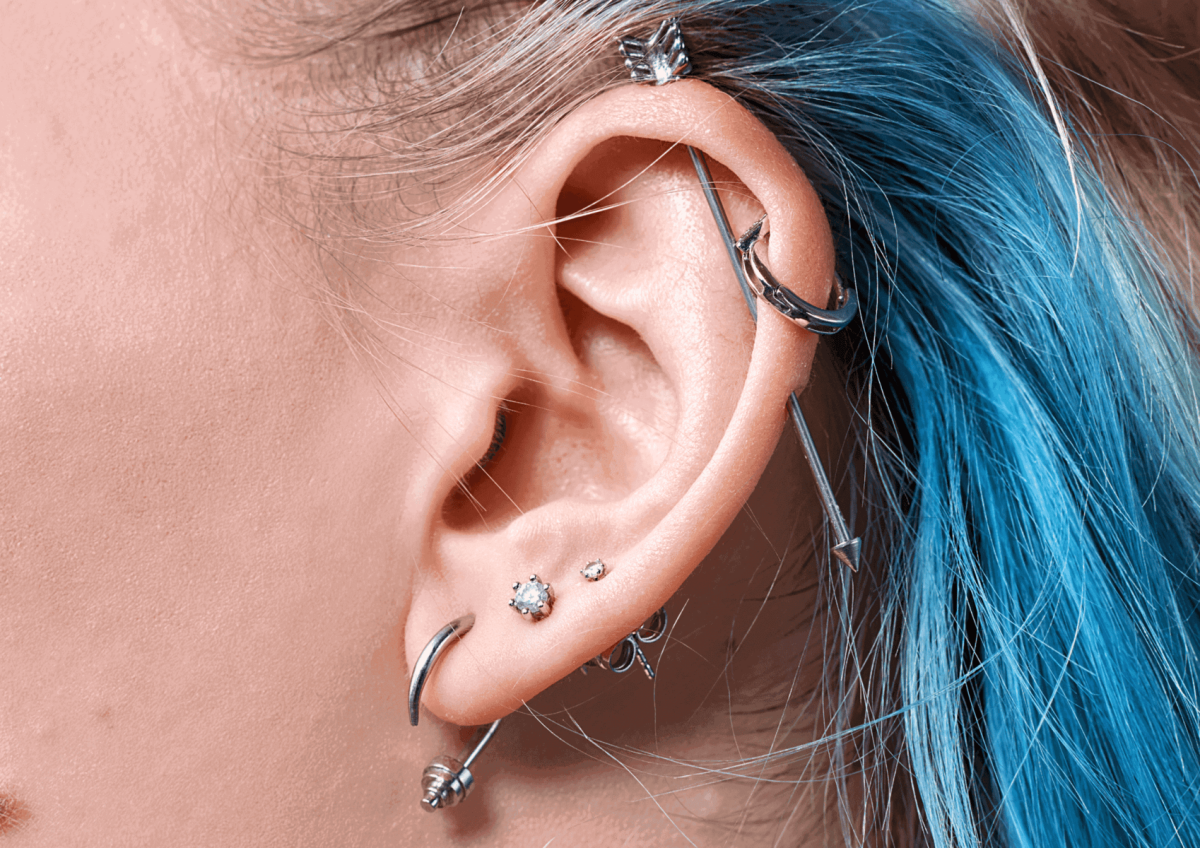
Don’t skip the downsize: Your initial piercing jewelry has a longer post to accommodate for swelling. But once that initial swelling subsides (typically after 4-8 weeks), that extra length becomes a liability. It’s more likely to get snagged on hair and clothing, causing irritation bumps and migration. Returning to your piercer for a shorter, perfectly-fitted post is one of the most crucial steps for a healthy, happy flat piercing.
A common mistake is changing jewelry for aesthetic reasons too early. Cartilage can feel healed on the outside long before the internal tissue channel, or fistula, is fully mature—a process that can take 6 to 12 months.










